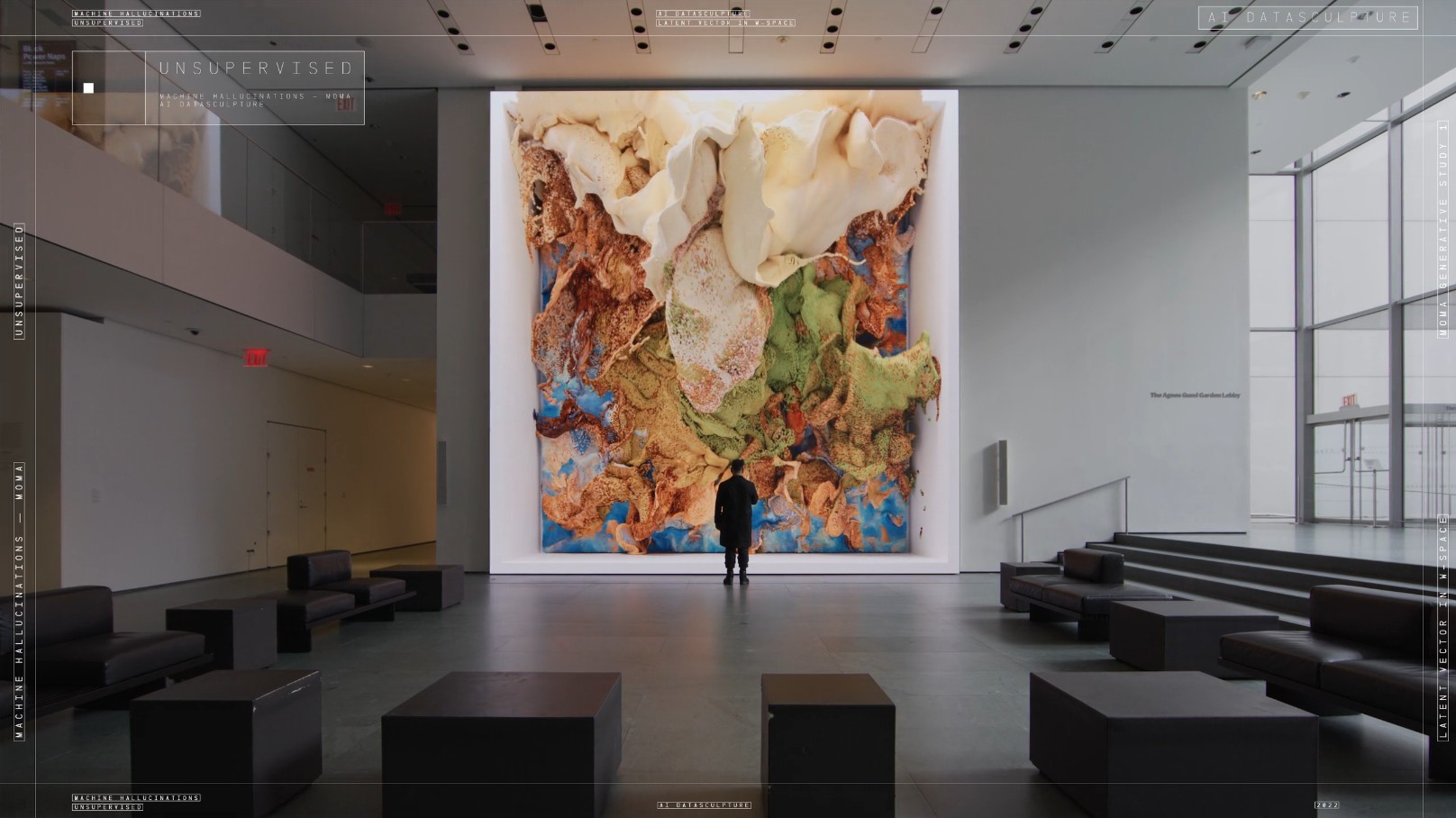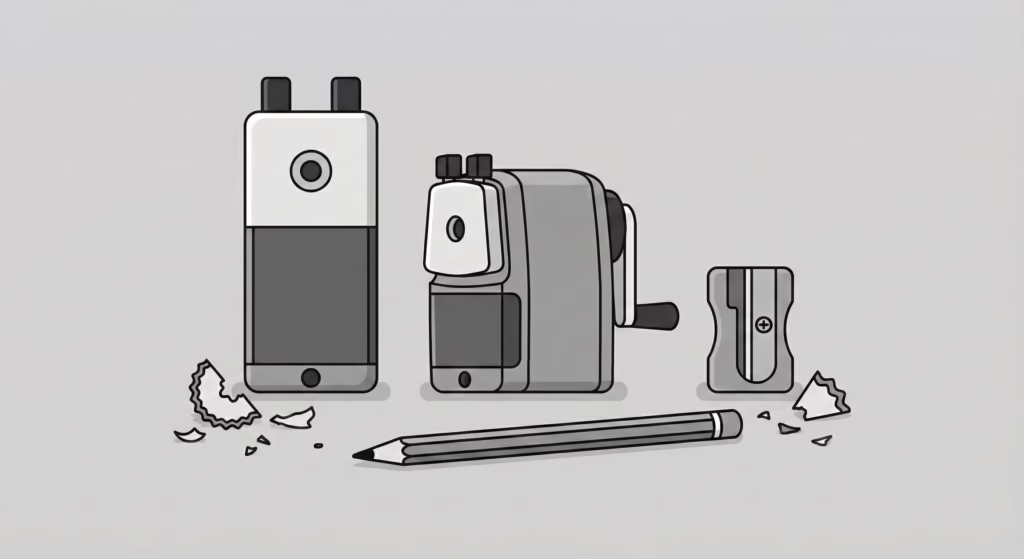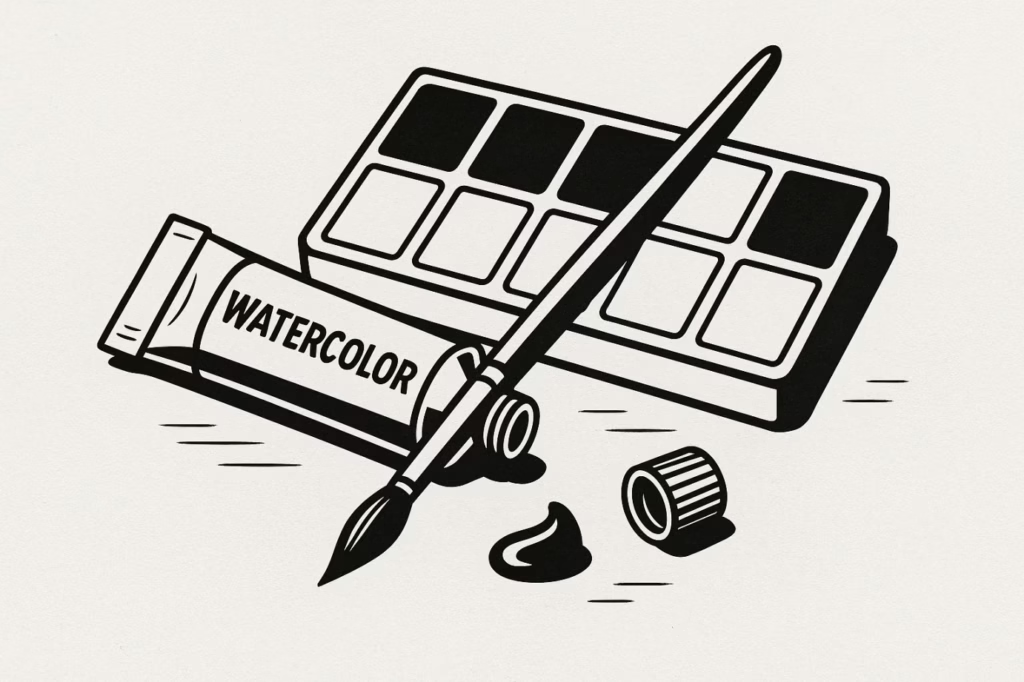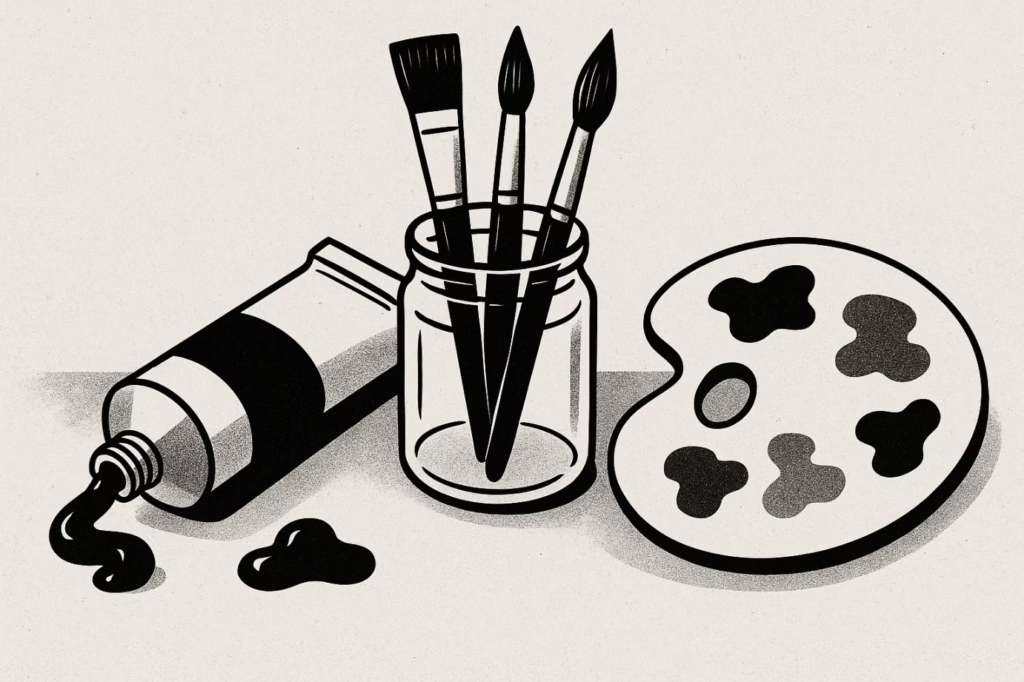In the ever-evolving landscape of contemporary art, a revolutionary movement is taking shape—one that refuses to be confined to either pixels or paint. Welcome to the world of “phygital” art, where the boundaries between physical and digital creativity aren’t just blurred; they’re being completely reimagined.
What Is Phygital Art? The New Frontier of Creative Expression
Phygital art—the seamless integration of physical and digital elements—isn’t merely a trend; it’s rapidly emerging as an entirely new medium that’s challenging our fundamental understanding of what art can be and how we experience it.

“We’ve moved beyond the false dichotomy of digital versus physical,” explains Sarah Wendell Sherrill, co-founder of Lobus, a platform for art asset management. “Today’s most innovative artists are creating works that exist simultaneously in both realms, offering multi-sensory experiences that weren’t possible even five years ago.”
In this article, we’ll explore the seven most stunning ways artists are blending physical and digital worlds to create revolutionary phygital experiences:
- Augmented Reality Enhancements: Physical artworks revealing hidden digital dimensions
- Data Materialization: Transforming invisible data into tangible, interactive experiences
- Responsive Environments: Physical spaces that digitally react to human presence
- Blockchain-Authenticated Objects: Traditional art paired with digital authenticity and expanded content
- Collaborative Robotics: Human-machine artistic partnerships creating dual-realm works
- Haptic Digital Experiences: Making the digital touchable through advanced feedback systems
- Environmental Data Sculptures: Physical art that morphs based on digital inputs from nature
Let’s dive into how today’s pioneering artists are using these techniques to create works that exist simultaneously in physical and digital worlds.
The Perfect Storm: Why Phygital Art Is Exploding Now
This creative revolution didn’t happen overnight. Several converging factors have created the perfect conditions for phygital art to flourish in 2025:
1. Post-NFT Evolution
The NFT boom of 2021-2022 introduced millions to digital art ownership, but many collectors still craved tangible connections to their investments. Phygital art answers this desire by bridging the gap.
“After the initial excitement about purely digital ownership, collectors began asking: ‘But what can I actually experience in my physical space?'” notes Noah Davis, head of digital art at Christie’s. “The market is responding with solutions that satisfy both digital authentication and physical presence.”
2. Accessible Technology
The tools needed to create phygital art have become dramatically more accessible:
- AR development platforms requiring minimal coding
- Consumer-grade 3D printers and scanners
- Affordable microcontrollers and sensors
- User-friendly projection mapping software
- Mainstream blockchain integration options
According to a 2024 survey by ArtTech Quarterly, 68% of art schools now offer some form of phygital art training, up from just 12% in 2020.
3. Post-Pandemic Gallery Reinvention
As physical galleries reopened after COVID-19, many faced an existential question: how to offer experiences that couldn’t be replicated online. Phygital installations have become their answer, drawing visitors with the promise of art that must be experienced in person but extends into the digital realm.
“Our attendance has increased 37% since we introduced our phygital exhibition series,” reports Hans Ulrich Obrist, artistic director at the Serpentine Galleries in London. “People are hungry for experiences that acknowledge both our physical and digital identities.”
The 7 Stunning Ways Artists Are Blending Physical and Digital Worlds
Let’s explore the seven revolutionary approaches artists are using to create phygital masterpieces that exist simultaneously in tangible and digital realms:
1. Augmented Reality Enhancements: Revealing Hidden Dimensions
Pioneer: Acute Art with KAWS
Source : The Toy Chronicle / Youtube
KAWS, in collaboration with Acute Art, has transformed how we experience sculpture through their “EXPANDED HOLIDAY” project. Physical sculptures in global locations like Taipei and Hong Kong are paired with AR versions viewable through the Acute Art app, allowing visitors to place virtual versions of these monumental works in their own spaces.
“AR allows me to create works that would be impossible to realize as physical sculptures,” KAWS explains. “The artwork exists in both forms—physical monuments and pocket-sized experiences you can take home.”
This technique transforms static physical art into dynamic experiences that reveal hidden digital dimensions only visible through technology, creating pieces that exist simultaneously in multiple realities.
2. Data Materialization: Making the Invisible Tangible
Pioneer: Refik Anadol
Source : Wired / Youtube
Anadol’s groundbreaking “Machine Hallucinations” series transforms vast datasets into immersive physical installations. His “Melting Memories” exhibition used EEG brain scan data to create fluid digital projections on sculptural forms, exploring the materiality of human memory.
“I’m interested in the space between the physical and digital, where data becomes a pigment and AI becomes a collaborator,” Anadol explained in his 2023 TED Talk. “Each installation exists as both a tangible structure and a living digital organism.”
This approach transforms invisible data—from climate patterns to human emotions—into physical experiences that can be walked through and felt, giving material form to digital information that would otherwise remain abstract and unseen.
3. Responsive Environments: Spaces That React to Human Presence
Pioneer: teamLab
Source : teamLab / Youtube
This Japanese art collective has revolutionized immersive art with their permanent exhibitions in Tokyo, Shanghai, and New York. Their installations feature physical rooms where digital waterfalls respond to visitors’ movements, flowers bloom when touched, and interactive light sculptures transform based on collective human behavior.
“We dissolve the boundary between viewer and artwork,” says teamLab founder Toshiyuki Inoko. “Our spaces are physically real yet digitally responsive—creating environments that couldn’t exist in either realm alone.”
These responsive environments transform entire physical spaces into digital canvases that react to human presence, creating immersive experiences where the visitor becomes an essential element of the artwork itself.
4. Blockchain-Authenticated Objects: Pairing Tradition with Digital Verification
Pioneer: Damien Hirst
Source : Heni / Youtube
Hirst’s “The Currency” project features 10,000 physical paintings on handmade paper, each corresponding to an NFT. Collectors had to choose between keeping the NFT or trading it for the physical artwork—if they kept the NFT, the physical painting was destroyed.
“This project explores the boundaries of art and currency—when art changes and becomes currency, and when currency becomes art,” Hirst explained. The project gained additional depth as collectors faced the philosophical choice between physical possession and digital ownership.
This technique pairs traditional artistic media with blockchain verification, creating objects that exist simultaneously as tangible artworks and as digital assets with authenticated provenance and expanded content.
5. Collaborative Robotics: Human-Machine Artistic Partnerships
Pioneer: Sougwen Chung
Source : TED / Youtube
Chung’s “Drawing Operations” series features robotic arms that collaborate with her in real-time, creating physical drawings while learning from her movements. The physical drawings exist alongside an ever-evolving digital twin, with the robot responding to Chung’s gestures while simultaneously influencing her creative process.
“My work explores the boundaries between human and machine creativity,” Chung explains. “The robot becomes both my collaborator and mirror, creating works that exist in the physical space of the drawing and the digital space of the algorithm.”
This approach creates a feedback loop between human creativity and machine learning, resulting in works that are simultaneously hand-created and algorithm-generated, existing as both physical artifacts and evolving digital systems.
6. Haptic Digital Experiences: Making the Digital Touchable
Pioneer: Ani Liu
Source : TEDx Talks / Youtube
Artist and technologist Ani Liu is pioneering touch-based feedback systems that allow viewers to physically “feel” digital elements. Her “Touch Reality” installation uses ultrasonic haptic technology to create touchable holograms.
“The final frontier in phygital art is touch,” Liu states. “When we can physically feel digital elements, the separation between realms truly dissolves.”
Using technologies like ultrasonic arrays, parametric speakers, and microfluidic systems, these works create the sensation of touch without physical contact, making digital elements tangible in revolutionary ways that challenge our understanding of materiality.
7. Environmental Data Sculptures: Art That Morphs With Nature’s Inputs
Pioneer: Janet Echelman
Source : TED/ Youtube
Echelman’s aerial net sculptures combined with digital projections in Boston’s Greenway create works that respond to environmental data. Her installation “As If It Were Already Here” uses physical nets that change appearance based on wind patterns, weather data, and tidal information from Boston Harbor.
“My sculptures become a canvas for both natural forces and digital projections,” Echelman explains. “The wind shapes the physical form while data shapes the digital visualization—creating a piece that’s simultaneously responding to both worlds.”
These environmental data sculptures transform natural inputs into artistic expressions that exist as both physical objects shaped by nature and digital visualizations controlled by environmental data streams.
The Collector’s Perspective: A New Type of Art Ownership
For art collectors, phygital works present both exciting opportunities and novel considerations.
“Collecting phygital art requires thinking about preservation in entirely new ways,” explains Kenny Schachter, art dealer, writer and prominent collector specializing in digital art. “You’re not just preserving physical materials but also ensuring digital accessibility across changing technologies.”
Key considerations for collectors include:
- Dual Preservation: Strategies for maintaining both physical and digital components
- Hardware Dependencies: Understanding the technological requirements for displaying and experiencing the complete work
- Authentication Methods: From blockchain verification to certificates of authenticity
- Display Options: Specialized display systems for works that require constant digital connection
- Resale Rights: How smart contracts can ensure artists receive secondary market royalties
Despite these complexities, the market is responding enthusiastically. According to Artnet’s Phygital Art Market Report (2024), sales of phygital works increased by 142% from 2023 to 2024, with the average selling price rising from $4,800 to $12,300.
Beyond Galleries: Phygital Art in Commercial and Public Spaces
The impact of phygital art extends far beyond traditional art institutions:
Retail Experiences
Source : Balenciaga / Youtube
Public Art Initiatives
Luxury brands like Balenciaga and Gucci have commissioned phygital installations that transform shopping into immersive artistic experiences. Balenciaga’s collaboration with digital artist Jon Rafman for their flagship stores created environments where physical clothing displays interact with surreal digital landscapes.
Cities including Seoul, Barcelona, and Toronto have launched phygital public art programs. Janet Echelman’s aerial net sculptures combined with digital projections in Boston’s Greenway create works that respond to environmental data and weather patterns, transforming with wind and light.
“Public phygital art democratizes access to cutting-edge creative experiences,” notes Helen Benarroch, curator of Barcelona’s IDEAL Digital Arts Center. “It transforms passive city spaces into interactive zones that respond to and reflect their communities.”
Educational Applications
Source : Yomi matsuoka/ Youtube
Museums and educational institutions are using phygital approaches to create more engaging learning experiences. Olafur Eliasson’s “Rainbow Assembly” at the Museum of Contemporary Art Tokyo uses physical prisms and digital light manipulation to create educational experiences about color theory and perception.
Creating Phygital Art: Tools and Approaches for Artists
For creators looking to enter the phygital space, several pathways exist:
Entry-Level Approaches:
- Using Artivive or similar AR art platforms to add digital layers to traditional works
- Creating AR filters for social media platforms that interact with physical prints
- Embedding QR codes that link to digital content within traditional pieces
Intermediate Techniques:
- Learning projection mapping basics with software like MadMapper
- Creating simple interactive elements using Arduino or Raspberry Pi
- Developing basic AR applications with user-friendly platforms like Adobe Aero
Advanced Implementations:
- Custom sensor-based installations requiring programming expertise
- Blockchain integration for authentication and digital twin creation
- Complex data-responsive works that evolve based on external inputs
“The beauty of phygital art is that you can start simple and gradually build your technical skills,” advises Daniel Arsham, whose crystallized technological artifacts with AR components have pioneered the phygital space. “The most important thing is conceptual clarity—understanding what story you’re trying to tell across both realms.”
The Future: Where Phygital Art Is Heading
As we look toward the horizon, several emerging trends suggest where phygital art may be heading:
Haptic Feedback Integration
Artist and technologist Ani Liu is pioneering touch-based feedback systems that allow viewers to physically “feel” digital elements. Her “Touch Reality” installation uses ultrasonic haptic technology to create touchable holograms that further blur the boundary between realms.
AI-Generated Responsive Elements
Sougwen Chung’s “Drawing Operations” series features robotic arms that collaborate with her in real-time, creating physical drawings while learning from her movements. The physical drawings exist alongside an ever-evolving digital twin, creating works that never display the same way twice.
Decentralized Ownership Models

Kevin Abosch’s “Forever Rose” project, which sold for $1 million in cryptocurrency, pioneered fractional ownership where different collectors own various components of the same work—a model now expanding into more complex phygital pieces.
Phygital Architecture

Striatus 3D-Printed Concrete Bridge by Zaha Hadid Architects, demonstrating phygital integration of form, material, and embedded technology.
Studios like Zaha Hadid Architects are applying phygital principles to entire environments. Their “Striatus Bridge” project combines 3D-printed concrete structural elements with embedded sensors and digital twins that monitor structural integrity in real-time.
Getting Started: Experiencing Phygital Art
For those intrigued by this emerging field, several entry points exist:
- Visit specialized exhibitions: teamLab’s permanent installations in Tokyo, Shanghai, and New York
- Explore online/offline galleries: König Galerie’s “The Artist Is Online” hybrid exhibition series
- Attend workshops: NEW INC, the New Museum’s cultural incubator, offers phygital art creation courses
- Join communities: The Gray Area Foundation for the Arts provides resources and connections for creators at all levels
Conclusion: The Phygital Revolution Is Just Beginning
As we’ve explored, artists are merging physical and digital realms in these seven revolutionary ways:
- Augmented Reality Enhancements that reveal hidden digital dimensions in physical works
- Data Materialization that transforms invisible information into tangible experiences
- Responsive Environments that create spaces digitally reacting to human presence
- Blockchain-Authenticated Objects that pair traditional art with digital verification
- Collaborative Robotics that establish human-machine artistic partnerships
- Haptic Digital Experiences that make the digital touchable through feedback systems
- Environmental Data Sculptures that morph based on nature’s digital inputs
As we move deeper into the 21st century, the artificial division between our physical and digital lives continues to dissolve. Phygital art stands at the vanguard of this integration—not merely reflecting this new reality but actively shaping how we understand and experience it.
The most exciting aspect may be that we’re still in the early days. Current phygital art will likely look primitive compared to what’s coming in the next decade as technology continues to advance and artists push the boundaries of what’s possible when physical and digital creativity collide.
Whether you’re a creator, collector, or simply an art enthusiast, the phygital revolution offers a thrilling glimpse into a future where art isn’t confined to a single realm of existence but flows freely between the spaces we inhabit—both with our bodies and with our increasingly digital minds.
What phygital art experiences have captured your imagination? Share your thoughts in the comments below




